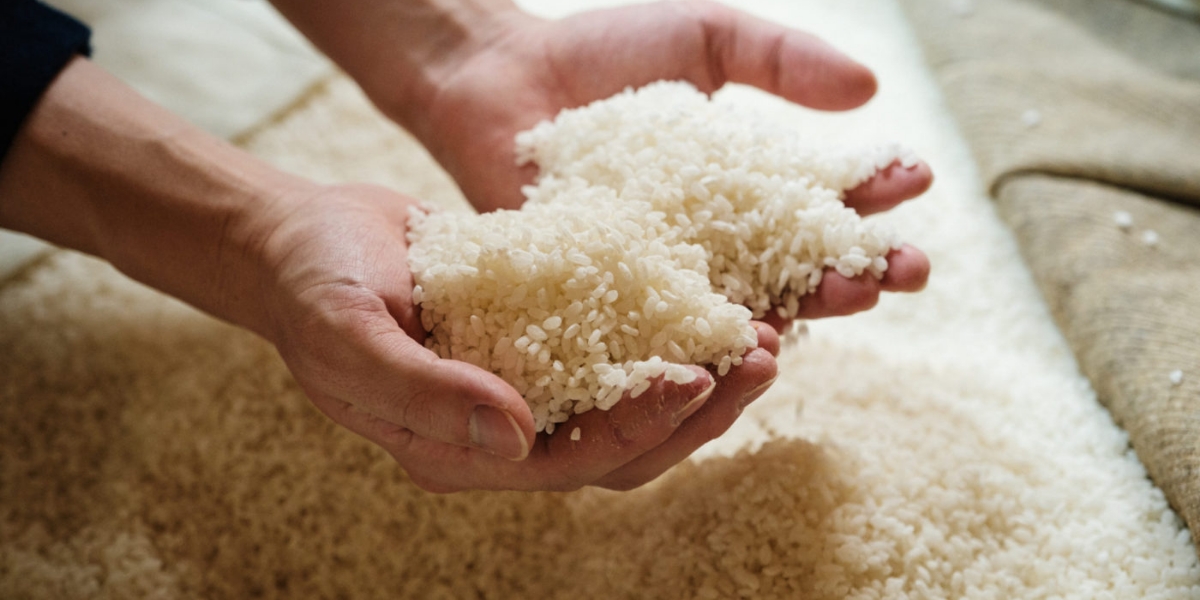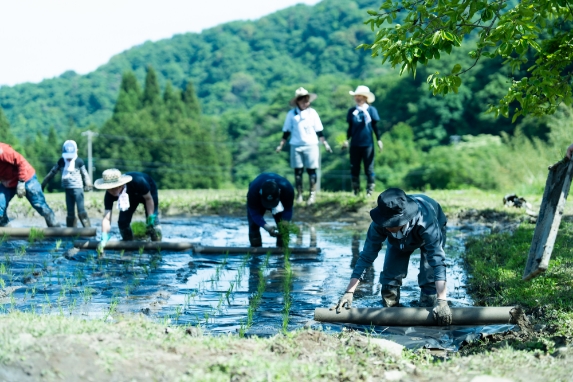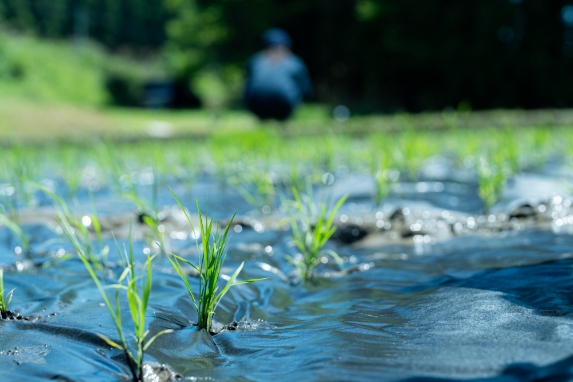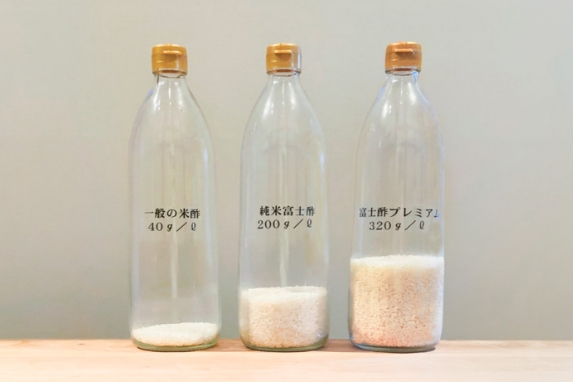飯尾醸造の酢造り

2.原料米について
飯尾醸造のお酢の原料となる米は、地元・丹後の棚田で作る無農薬※1米です。素性の分かる新米※2だけをこれほどまで贅沢に使った米酢は他に類をみません。

棚田の無農薬米
お酢の原料となる米は、地元・丹後の棚田で作る無農薬※1米です。昭和39年より、農家と契約して無農薬※1の米作りを続けてもらっています。 農作業が困難な山里の棚田でわざわざ作るのは、生活排水や他の田んぼで使われる農薬の汚染を避けるためです。また、昼夜の寒暖差が大きく、水がきれいな棚田で穫れる米は、最高の味わいを待ちます。
米の品種は8割が“コシヒカリ”、残りの2割が“五百万石”です。“五百万石”は麹づくりに用います。
近年では農家の高齢化と過疎化が深刻となり、いまでは蔵人も米作りにたずさわっています。また、私どもの通販のお客様や取引先様など、様々な方に田植え、稲刈りをお手伝いしていただいています。


原料米の量
一般的にお酢の原料米には、古米やクズ米、米ヌカなどを使うメーカーが圧倒的に多いのですが、私どもでは、その年の秋に収穫した新米※2だけを原料に、お酢を仕込んでいます。
「純米富士酢」の深いコクと味わいの秘密は、酢1リットルにつき200gというたっぷりの米の量にあります。これはJAS規格が法律に定めた「米酢」と表示できる基準(40g)の5倍量にあたります。「富士酢プレミアム」はさらに多くの米を使っています。酢1リットルにつき320g。JAS規格の8倍もの量です。素性の分かる新米※2だけをこれほどまで贅沢に使った米酢は他に類をみません。お米の旨味たっぷりの富士酢づくりは、安全な原料をたっぷりの量使うところからはじまります。

米酢1Lあたりの原料米の量(JAS規格)
JAS(日本農林規格)
= 米40g/米酢1リットル
JAS規格で、米酢と表示できると定める米の量は、1リットルにつき40gです。それだけではお酢が作れないため、「醸造用アルコール」(「アルコール」「酒精」とも呼ぶ)を添加して造るのが一般のお酢です。「醸造用アルコール」は、エタノールと同じものを表します。とうもろこしやさとうきび由来の廃糖蜜から作られますが、遺伝子組み換え作物が原料であることが多いようです。
200g = 純米富士酢
「純米富士酢」に使っているお米の量は、200g。これはJAS規格の5倍量にあたります。お米の旨味がしっかりとあり、すっぱいだけではないお味です。
320g = 富士酢プレミアム
「富士酢プレミアム」に使っているお米の量は、320g。これは実に、JAS規格の8倍量にあたります。お米の旨味がたっぷりで出汁が入っていると錯覚する方もある程です。おだやかな酸味が特徴です。
※1「無農薬」・・・法律上は無農薬という表現が以前から禁止されております。商品ラベル等では「栽培期間中 農薬不使用米」と記載しております。
※2「新米」・・・前年のお米は混ざっておりませんが、秋に収穫し年が明けてからの精米になるため、新米の定義に該当しないことから商品ラベル等では「米」と表現しております。